Slide
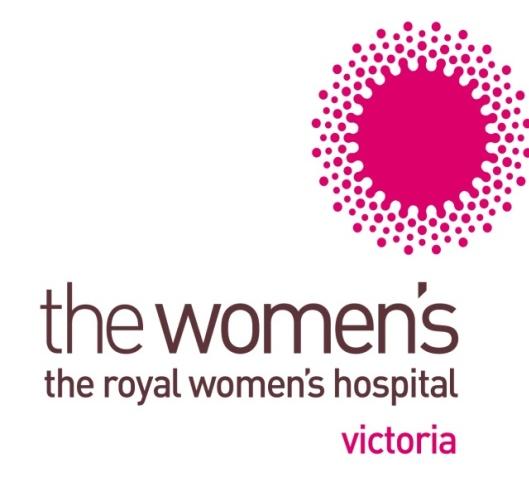

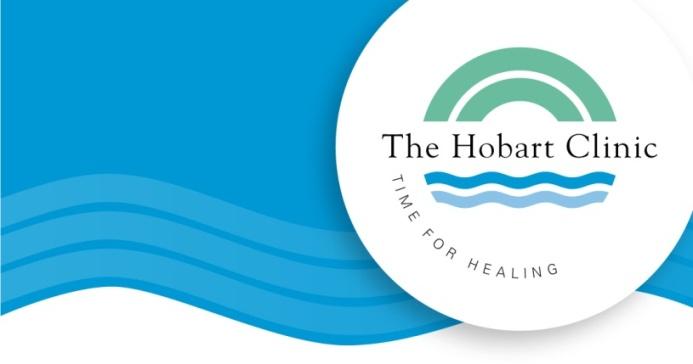
Maternal perinatal mental
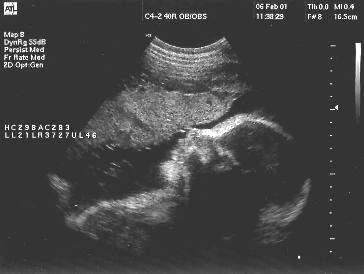
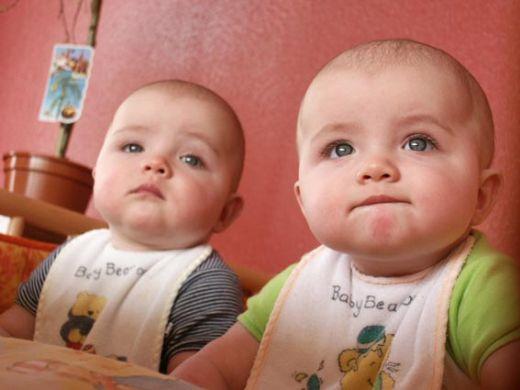

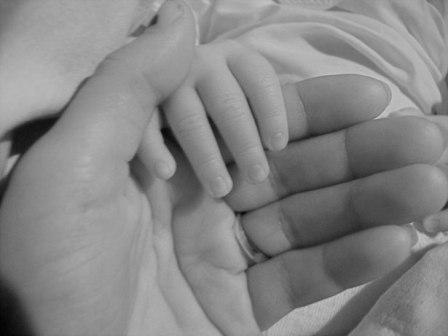
Perinatal mental health
• Pregnancy and 12
months postpartum
– Women with pre-existing
mental health problems who become pregnant
– Women who develop mental
health problems antenatally
– Women who develop mental
health problems postnatally
– And their children and family
How common are
mental disorders in
women
•12 month prevalence
• Any anxiety disorder 17.9% •Any affective disorder 7.1% •Any substance use disorder 3.3%
•Schizophrenia and related disorders 0.5-1.0%
•Bipolar disorder
•Type 1 0.8-1.0% •Type 11 2-3%
•Personality traits/disorders
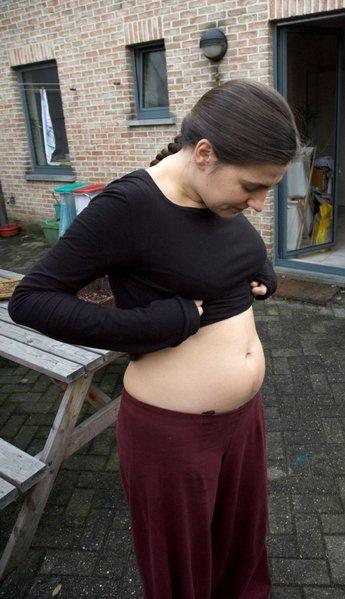
The uncommon but serious
problems in pregnancy
The uncommon but serious
problems in pregnancy
• Schizophrenia and bipolar disorder
– Diagnosis usually predates pregnancy – Illness may have an impact on
• Planning pregnancy • Maternal ante-natal obstetric care • The pregnancy and health of the foetus • The delivery and immediate post-delivery period • The mother-infant relationship
– The pregnancy may have an impact on
maternal mental health
Women with schizophrenia
• Fertility of women with schizophrenia=general population • Pregnancy more often unplanned and/or unwanted • Pregnancy often accompanied by a range of risk factors
– The effects of the maternal psychotic illness – The effects of maternal psychotropic medication – Poor nutrition – Substance abuse-nicotine, alcohol, illicit drugs – Poverty – Homelessness – Poor social support – Being victims of violence – Poor attendance for ante-natal obstetric care
Women with schizophrenia
• Impact of mental illness on pregnancy-
– present late, avoid maternity care – IUGR due to poor self care – ↑ rates preterm delivery, antepartum haemorrhage
and placental abruption
– More difficulty managing labour, and higher rates of
caesarian section
• Impact of mental illness on neonatal outcomes-
– ↑ rates of
• cardiovascular and other congenital abnormality • stillbirth and neonatal death • failure to thrive
Women with schizophrenia
• Impact of pregnancy, childbirth on mental health
– ↑ risk of relapse – Risk of incorporation of pregnancy and baby in
delusional system
• Effects of psychotropic medication
– During pregnancy
• On mother e.g. increased risk of gestational diabetes • On foetus
– With breastfeeding
• Impact of maternal mental illness on attachment
and parenting abilities
Women with bipolar disorder
• Impact of mental illness on pregnancy
– risks of untreated depression – untreated mania poses clear risks due to
impulsivity and poor judgement
– Mania resulting in poor self care is dangerous
for both mother and child
• Impact of mental illness on neonatal
– Risks of untreated depression – Specific risks of untreated bipolar disorder are
not known, little research available
Women with bipolar disorder
• Impact of pregnancy, childbirth on mental health
– Risk of relapse in pregnancy and post-partum is high-
• Of women currently receiving treatment, 23% have illness
episode in pregnancy and 52% in the postpartum period (Viguera et al 2011)
• First lifetime episode occurred in the perinatal period in 7.6% • Risk is increased if cease mood stabilizers, esp if cease
• Post-partum relapse esp first 24-36 hours, and continuing
high risk for 3 weeks
Women with bipolar disorder
• Effects of psychotropic medication
– During pregnancy-mood stabilizers may have teratogenic effects – With breastfeeding-some risks to neonate
• Avoid lithium and lamotrigine • Care with carbamazepine and valproate
• Impact of maternal mental illness on attachment and
parenting abilities
Effects of parental mental illness
• Parenting and parent-infant interaction
– Illness-related deficits may include:
• lack of emotional warmth and intimacy; • attentional deficits; • Impaired maternal competence
– Lack of confidence – Poor decision making and functional ability – Neglect
– Infrequent, but important, may be clear risk of
harm to baby -omission or commission
• Attachment relationship
Improving maternal perinatal mental health of
women with schizophrenia and bipolar disorder
• Include consideration of
reproductive choices in routine care
• Early detection and
monitoring of pregnancy
• Team approach in
pregnancy and postpartum
Healthy Babies for Mothers with Serious Mental Illness: A Case
Management Framework for Mental Health Clinicians
Women with schizophrenia and
bipolar disorder
• Include consideration of reproductive
choices in routine care
– Contraception-woman „at risk‟ of or wanting to become pregnant – Unplanned or unwanted pregnancy- TOP option – Plan for pregnancy-preconception advice
• Treatment of mental illness- GP, mental health
clinician, psychotropic medication and other treatments
• Lifestyle- nutrition, smoking, alcohol, illicit drugs • Housing, safety, social support
Women with schizophrenia and
bipolar disorder
• Early detection and monitoring of pregnancy
– (obstetric) „high risk‟ pregnancy-specialist obstetric care – High risk time for management of mental illness-specialist
psychiatric care
• Team approach- midwife, obstetrician, GP,
mental health; birth plan
• Early consideration of parenting capacity • Post-birth-baby with mother
• Supports in community, treating team incl MCHN, GP, mental
health, child protection, child and family support
• Parenting capacity and attachment relationship
The common mental health problems
during and following pregnancy
The common mental health problems
during and following pregnancy
– Depressive symptoms are common during pregnancy, peak
during T3 and fall following delivery
• 25% have high rates of depressive symptoms, • 10% have depressive disorder during pregnancy
– Postpartum „blues‟
• Time-limited mood disturbance in the postpartum period-prevalence rate up
– Postnatal depression
• Rates of non-psychotic depression are greater than rates during
reproductive years outside childbirth-up to 15%
• Half of the women depressed postpartum were depressed antenatally i.e.
only 50% of cases of depression in postpartum are new onset
The common mental health problems
during and following pregnancy
– Rates of GAD and OCD are higher in perinatal population
cf general population; but rates of PD and PTSD are similar
– And >10% experience significant anxiety symptoms- but
do not meet criteria for disorder
– Pregnancy-specific anxiety common-? Prevalence
• Fear of giving birth • Fear of having a physically or mentally handicapped child • Concern about one‟s own appearance
– Commonly co-occurs with depression
Women with depression
• Impact of depression on the pregnancy
– Lack of care about the pregnancy, late and/or
irregular attendance antenatal care
– poor health behaviours-smoking, alcohol – Risk of suicide, foeticide – Increased rate of spontaneous abortion – Increased risk gestational hypertension and
subsequent preeclampsia
• Poor maternal-foetal attachment
Women with anxiety and
• Impact of anxiety and depression on the baby
– Foetus-greater arousal during pregnancy -
• foetal heart rate variability (a marker for fetal distress), • foetal movement patterns-more body movements during REM sleep • foetal sleep-wake cycles-greater wakefulness
– Neonatal outcomes- Increased frequency of
– IUGR (<2500gm) – spontaneous preterm birth (<37 weeks) – low APGAR scores, – admission to NICU – neonatal growth retardation
Women with anxiety and
• Infants exposed to antenatal anxiety and/or depression
– are highly reactive, have poorer interaction with mother, and
have poorer scores on infant development measures
• Poorer long term developmental outcomes for the child
– Developmental delay – Lowered IQ in adolescence – Impaired language development – increased rate of emotional and behavioural problems – increased rate of ADHD – Association with criminality
Women with anxiety and
psychotropic medication
– During pregnancy – breastfeeding
Women with anxiety and
• Impact of depression and anxiety on attachment
and parenting abilities
• Depression-negative themes of being a „bad mother‟
– Not „liking‟ the baby; not having a bond; inability to tolerate crying – Infant does not love them; thinks they are a „bad mother‟ – Feelings of failure, that partner is better parent (jealousy) – Sense of helplessness and hopelessness
– about not being "perfect"; about other people‟s perceptions of self as a mother
– Preoccupation with baby‟s health e.g., that baby will stop breathing in the night
(checking++), that baby is not putting on weight/ feeding enough
– Obsessional thoughts about harming the baby e.g., in the bath or while out in
pram (traffic, trains)
– Difficulty in separating from baby
Effects of parental mental
• Mothers with high levels of depression
– Interact differently with their infants v non-depressed women
• Show less behavioural synchrony with their infant • Less responsive to their infant‟s cues • Less affirming of their infant‟s behaviour
– Are less likely to feel confident in the mothering role
• And in turn, infants of depressed mothers
are more likely to display insecure attachment relationships
Personality problems/disorders
• Personality style per se ± co-morbidity • Cluster B most problematic
– esp borderline traits- instability of interpersonal
relationships, self-image and affect, and marked impulsivity
• Co-morbidity-depression, alcohol and drug use • Attachment difficulties-often require interventions
to promote maternal responsiveness and secure attachment
Management of women with perinatal
mental health problems
Management-general principles
• Intervene early if you can-prevention/minimisation of problems • Treat the presenting complaint/ illness using the same approach or
techniques used in non-pregnant women
• but remember:
– There is (or soon will be) an infant – Assess maternal competence & be mindful of the risks
• When concerns or „at risk‟ consider extended post-natal stay
• Reduce over-stimulation & sleep deprivation • Establish breastfeeding (if appropriate) • Assist maternal confidence
– If acutely unwell consider Acute Inpatient Unit VS Mother Baby Unit
VS permanent separation at birth
• Be aware of some of the logistical & practical limitations for a pregnant
woman / new mother
Management-general principles
• Where possible meet the partner
– provide psycho-education – address issues within the relationship – another perspective
• Mobilise available of social supports • Useful resources
– mothers‟ groups, play groups, specific parenting supports for mothers with
mental illness, PANDA, peer support
• Clinical services
– If possible, a system/network
– Antenatal and postnatal may vary but include
General Practitioners
• Family support • Psychologist/psychiatrist (public and private)
Management- general principles
• Treatment should be guided by a risk-benefit analysis
– Risk to mother of treating/not – Risk to foetus/newborn of treating/not
• Untreated maternal mental illness poses a risk to both
mother and child
• Psychological therapies-e.g. ST, CBT, IPT are safe, but
not effective for more severe disorders
• Medications should be prescribed with caution for
appropriate indications
• Any management plan should include the partner (where
Management-general principles
• Maternal mental illness can affect
– Maternal parenting abilities – Mother-infant attachment
• Parent-infant perinatal intervention may be
Psychotropics in Pregnancy
• Pregnancy not protective for mental illness • Relapse of schizophrenia or bipolar
disorder poses risks for mother and baby
• Antenatal depression and anxiety have
adverse effects on mother and baby
• Postnatal depression is common and is
associated with significant morbidity
• Risk benefit analysis-prescribe v not prescribe
• Risk to mother/pregnancy • Risk to infant
• If disorder is mild-moderate use a non-pharmacological
• Routes of foetal exposure
– Placental transfer-measure cord: maternal ratios – Amniotic fluid-generally measures of amniotic fluid:
maternal serum ratios not reliable
Are psychotropic drugs safe in
• Reproductive loss
– miscarriage, FDIU, stillbirth
• Pregnancy complications
– hypertension, pre-
eclampsia, gestational diabetes
• Neonatal outcomes
– preterm birth, low or
excessive birth weight, sedation, withdrawl effects
• Structural abnormalities
– Baseline rate 3-5%
• Neurodevelopmental
Australian categorisation of drugs
– taken by large no of women – no evidence increased risk malformations or other
direct or indirect harmful effects on foetus or neonate
– caused or suspected of causing harmful effects on
foetus or neonate
– may be reversible – no malformations
Australian categorisation of drugs
• Category B (limited no of women) human data are
lacking or inadequate and so subcategorisation is based on animal studies.
• Allocation to category B does NOT imply greater safety
• Category B-no increase in malformation or other harmful
– B1 animal studies support this
– B2 animal studies inadequate or lacking
– B3 animal studies show evidence increased occurrence foetal
damage (unknown significance in humans)
Australian categorisation of drugs
– cause/suspected of causing malformations or irreversible
damage to foetus
– Note in some cases assigned D as „suspected‟ – Note, not necessarily contraindicated e.g. anticonvulsants
• Category X (high risk permanent damage)
Timing of exposure effects risk
• Structural abnormalities are typically associated with
early pregnancy exposure-period of maximum vulnerability is 3-12 weeks
– Drug is considered teratogenic if it raises the
risk of congenital physical malformations over the baseline level of birth defects which is 3-5%
• Detrimental effects on neurobehavioural, motor and
cognitive development are potentially associated with exposure throughout or later in pregnancy
The decision to prescribe or not
mother/pregnancy
– Of medication
– Of untreated maternal
• Studies-multiple case reports, limited
prospective observational and cohort studies
• Reproductive loss
– No evidence of increased rate of spontaneous
abortion or SB in women with psychiatric disorders treated with antipsychotics
• Pregnancy complications
– Increased rate of gestational diabetes in women treated with a
variety of antipsychotics; also more likely to require caesarian section
• Neonatal outcomes
– Increased rates pre-term birth and lower birth weight (FGAs) – Increased birth weight SGAs esp olanzapine and clozapine – Low APGAR at birth, respiratory difficulty – Extapyramidal SEs- FGAs
• Structural abnormalities
– Case reports of variety of abnormalities – On balance little evidence antipsychotics are teratogenic- but the
studies are problematic
• Definition of malformation, exposure dose and duration,
smoking and substance abuse, poor antenatal care, medical co-morbidity, genetic factors
• No clear risk can be attributed to FGAs in pregnancy • Insufficient data re SGAs to inform prescribing policy except
on a case-by-case basis
• Neurodevelopmental outcomes
– Limited studies, no consistent findings
– haloperidol, droperidol, chlorpromazine,
zuclopenthixol, flupenthixol, fluphenazine
• B 1 category
• B2 category • B3 category
– Risperidone, olanzapine, paliperidone,
trifluoperazine, amisulpiride, aripiprazole, ziprasidone, quetiapine
• Balanced against risk to mother and infant of untreated
maternal schizophrenia or related disorders
Mood stabilisers-antiepileptics
• Retrospective and prospective cohort
studies, registry cohorts
• Neonatal outcomes
– Reduced head circumference-CBZ (VPA) – Lower birth weight-CBZ (VPA) – Neonatal hypoglycaemia- VPA – Sedation, withdrawl, toxicity – Neonatal hepatotoxicity LTG, CBZ – Coagulation defects (Vit K) CBZ
Mood stabilisers- lithium
• Pregnancy complications
– Lithium toxicity – polyhydramnios
• Neonatal outcomes
– Prematurity – Poor respiratory effort and cyanosis – Increased birth weight (large for gestation) – Hypotonicty, lethargy, hyperglycaemia,
hyperbilirubinaemia
– Goitre, hypothyroidism – Nephrogenic diabetes
Mood stabilisers-lithium
• Structural abnormalities
– Increase Ebstein‟s anomaly (displacement of
tricuspid valve into RV)-occurs in 1 in 20,000 general population; risk is 1 in 1,000 following lithium exposure
• Neurodevelopmental outcomes
– Limited data re outcomes of children exposed
to lithium in utero
Mood stabilisers
• Polytherapy increases risk of structural abnormality
• Risk of malformations reduced if folate taken throughout
• Early pregnancy investigations-
– high resolution morphological ultrasound with
assessment of nuchal translucency to assess for NTD and other malformations
– Lithium exposure-high resolution ultrasound and
foetal echocardiogram at 16W
– Foetal growth surveillance
Mood stabilisers
• D Category -carbamazepine, valproate, lamotrigine • D Category -lithium
• Balanced against risk to mother and infant of untreated
maternal bipolar or related disorders
• Meta-analyses, retrospective and
prospective cohort studies, case-controlled studies
• Reproductive loss
– Apparent increase in spontaneous abortion-
but studies did not control for psychiatric illness state; and they controlled variably for factors such as age, smoking, drug use
– No suggestion of increased risk of FDIU or SB
• Pregnancy complications
– One study has shown an increased risk of
hypertension and possibly pre-eclampsia in women exposed to SSRIs beyond the first trimester
• Neonatal outcomes
– Studies have shown a significant increase in pre-term
births (<37 weeks gestation)
• Seen with TCA and SSRI, SNRI • Longer exposures are more likely to decrease gestational age • Infants exposed to either SSRI or depression are more likely to be
born prematurely than those who are unexposed or partially exposed
• Neonatal outcomes
– Poor neonatal adaptation-jitteriness, irritability,
temperature instability, hypotonia, tachypnoea, feeding problems, GI symptoms, hypoglycaemia
– Low initial APGAR score-TCAs, SSRIs – Persistent pulmonary hypertension (PPHN)- in babies
of mothers exposed to SSRIs
• Base rate 0.5-2 per 1000; fatal in 10% of cases • Risk elevated to 3-6 per 1000 with maternal SSRI use
• Structural abnormalities-variable results
– Major congenital malformations-paroxetine – Cardiac malformations- increased risk with paroxetine,
fluoxetine, TCAs, tetracyclics [VSD paroxetine]
– Eye abnormalities- paroxetine – Ventricular outflow defects- SSRIs – Anencephaly, craniosynostosis, omphalocele-SSRIs esp
– Overall, no consistent data on SSRI exposure to support specific
morphological teratogenic risks
– Limb reduction abnormalities-TCAs
• Neurodevelopmental outcomes
– Major limitations of studies examining possibility of
neurodevelopmental adverse effects of Anti-D‟s
• Instruments used • Age children assessed • Maternal compliance with medication • Pregnancy exposure to other medications, alcohol, nicotine, illicit
• Maternal IQ, socioeconomic status, maternal depression
– Studies have failed to demonstrate any in utero effects of SSRIs
or TCAs on later infant cognitive development
– Two studies have suggested impaired psychomotor
development following in utero exposure to SSRIs-but both have methodological problems
– TCAs, SSRIs except paroxetine
– Mianserin, venlafaxine, desvenlafaxine, tranylcypromine
– Mirtazepine, duloxetine, moclobemide,phenelzine
• Balanced against risk to mother and infant of untreated maternal
Psychotropics in pregnancy-
• No blanket rules-tailor to individual patient, involve
partner where possible
• Careful risk-benefit assessment • Use psychological interventions when possible and
• Avoid 1st trimester exposure when possible • Use the lowest effective dose for shortest
appropriate/sufficient time
• Avoid polypharmacy if at all possible • Remember that serious mental illness has independent
adverse effects on pregnancy/infant
• We want to keep the woman well • Collaborative approach with range of health providers
Psychotropics and Breastfeeding
– Bottle-fed infants are more prone to
infections, allergies, being overweight at school entry, more likely to develop type-1 diabetes
– Mothers who don‟t breast feed are at
increased risk of obesity, osteoporosis, and ovarian and breast cancer later in life
– Breast feeding can promote mother-infant
interaction and increase maternal self-esteem
• Generally recommended that breast feeding should be
Breast feeding and
• Most drugs pass into breast milk-the amount is influenced by
– Maternal plasma level-dependent upon dose, timing and route of
administration, maternal metabolism and excretion
– Drug half-life – Lipid solubility-breast milk is fatty so concentrates lipophilic
drugs such as psychotropics
– Protein binding- drugs with low plasma protein binding transfer
into breast milk
– Amount of drug ingested-is baby exclusively breast fed or not,
timing since last maternal dose
– Infant metabolism-neonates have reduced capacity to
metabolise drugs for at least the 1st 2 weeks-this may be extended if the infant is preterm or ill
– Infant excretion-neonatal kidney is less efficient than that of an
Breast feeding and psychotropics
• What is a safe dose for the infant?
– Generally a dose which is < 10% of that
received by the mother (on a mg/kg basis)
– A lower value is used for drugs with greater
inherent toxicity
– Consider each case on its own merits as
factors such as maternal dose and infant clearance vary widely
The decision to prescribe or not
• Risks to Infant
– Of medication
– Of untreated maternal
• FGAs: some excretion occurs, monitor infant for sedation • SGAs:
– olanzapine- reports of sedation, jaundice, poor feeding and
lethargy, cardiomegaly and shaking
– Risperidone & Quetiapine -low M:P ratios and no adverse effects
– Clozapine- not recommended -breast milk concentration higher
than maternal serum (lipophilic)-reports of sedation, agranulocytosis, cardiovascular instability. IF need to continue and breastfeed then regular FBE from infant and mother
Mood stabilisers
• Avoid polypharmacy and use lowest possible dose • Monitor for SEs such as sedation, poor suckling, rashes • Lithium- should be avoided when breastfeeding • Carbamazepine-considered safe BUT there have been reports of hepatotoxicity, seizure, poor suckling • Valproate-considered safe BUT there have been reports
of thrombocytopenic purpura and anaemia
• Lamotrigine-extensive passage into breast milk
– Is metabolised by glucuronidation which is immature in neonate
and so could lead to accumulation of drug in the infant‟s system
– theoretical concern about Stevens Johnson syndrome
Antidepressants
• Most of the antidepressants are excreted in small amounts in breast
milk-so amount ingested by infant likely to be clinically insignificant
• Monitor for SEs including sedation, irritability, poor feeding • TCAs- have been widely prescribed, appear to be relatively safe,
levels in infant serum low or undetectable (possible exception of doxepin)-but beware sedation
– Remember toxic in O/D- mother, other small children
• SSRIs-appear safe, mostly low levels excreted in milk
– Avoid long half life drugs if possible
• Venlafaxine-limited data, data are reassuring • Newer antidepressants-limited data • LT studies on cognitive & behavioural development of infants
exposed in breast milk are lacking
Psychotropics in breastfeeding-
general guidelines
• No blanket rule, individual decision, informed consent,
involve partner when possible
• Sick or preterm infants are at risk cf healthy full-term
• If possible use drugs with short half-life; time feeds when
maternal serum levels are lowest i.e. just before next dose. May also express milk when serum levels highest and discard milk
• Monitor the feeding activity, sleep and conscious level of
any breastfed infant whose mother is on psychotropics
• Remember if mother has to stop breastfeeding guilt and
self-blame are common
For more information
• About medication
– and RWH Pharmacy
Information Line 8345 3190
• General information and advice
– Centre for Women‟s Mental Health, RWH
Source: http://www.earlyyears.org.au/__data/assets/pdf_file/0003/155208/Judd_Fiona.pdf
CONTENTSComEd's Hourly Pricing Program Program Benefits Comparing Your Rate Options Managing Costs with Hourly Pricing Tools to Help You Save Understanding Your Bill Hourly Pricing Program Guide COMED'S HOURLY PRICING PROGRAM ComEd's Hourly Pricing program is an electricity supply option available for residential customers. This program allows you to pay the hourly,
Guidelines for the Use of Subcutaneous Medications in Acknowledgments These guidelines have been adapted for local use with kind permission from NHS Greater Glasgow and Clyde. Drug compatibility data has been extracted from the revised (2009) version of the Lanarkshire Palliative Care Guidelines. Contents Part 1 - Bolus Administration 1.















